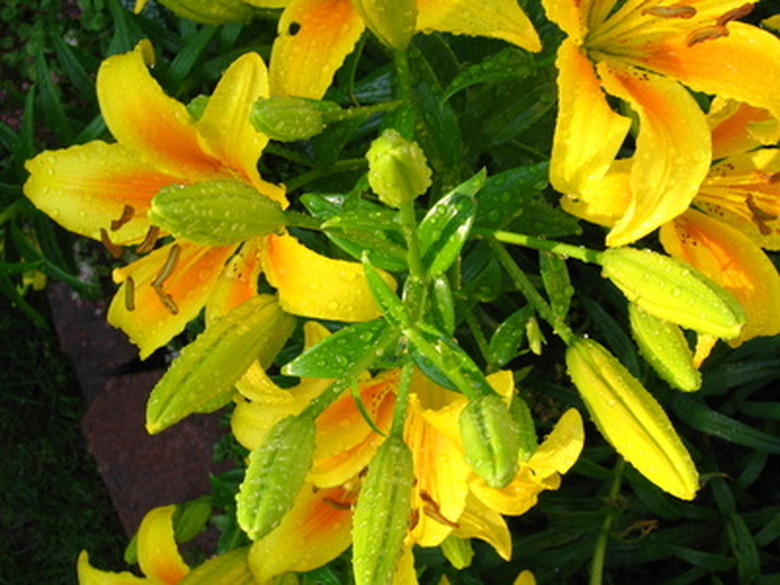The Effect Of Rainwater On Plants
Rainwater is generally an excellent source of irrigation for plants. Plants are not only watered when it actually rains, but rainwater can be collected in buckets and barrels for later use. In fact, commercial rain collection containers have a spigot and hose attached for easy watering. Collecting rainwater and watering your plants with it is a good idea all year long, but stored rain water is especially invaluable during times of drought and water restrictions.
Clean Water
Most rainwater is clean and gives plants water free from chemical additives, such as chlorine or salt, found in tap water. And because it's free to collect rainwater, plants are more likely to be watered more often than in homes where city water can be costly or restricted.
Reduces Salt
Clean rainwater seeps into the soil and washes salt–which is not healthy for plants–deep into the ground away from the roots. As an added bonus, plants are then able to absorb more water, which reduces their overall need for irrigation.
- Rainwater is generally an excellent source of irrigation for plants.
- Collecting rainwater and watering your plants with it is a good idea all year long, but stored rain water is especially invaluable during times of drought and water restrictions.
Raises Soil Acidity
Acid rain has a pH level below 5.6 often caused by air pollutants but also by natural sources such as volcanoes. More acidic soil can slow down plant growth and damage foliage. To find out if acid rain is an issue in your geographic region, conduct a search on the Environmental Protection Agency's website. Then talk to your local county extension office to remedy the acidic soil with fertilizer.
Watering Plants With Rainwater
Rainwater is, of course, the natural source of irrigation for plants. The salt-free soil encourages root growth and increases the amount of water that the roots can take in, which in turn allows the plants to better tolerate periods of drought. The simplest rainwater harvesting systems use gravity to direct rainwater to plants for their immediate use. You can design a simple system by orienting gutters so they deposit runoff from your home directly into planting beds and by adjusting the grades on your property so that runoff moves from paved areas and high points to planting areas.
- Acid rain has a pH level below 5.6 often caused by air pollutants but also by natural sources such as volcanoes.
- The salt-free soil encourages root growth and increases the amount of water that the roots can take in, which in turn allows the plants to better tolerate periods of drought.
